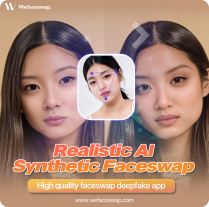The Evolution of Face Swap and Its Rising Popularity
The Evolution of Face Swap and Its Rising Popularity
Blog Article
Revolutionizing Media with AI-Powered Face Swap Technology
The transformation of experience change engineering from a trendy uniqueness to a conventional development is nothing short of fascinating. Originating as a fun filtration on early photo apps, face trades have today become an important section of social media material generation and actually skilled industries. Having its quick progress and increasing recognition, deepfake engineering has captivated millions worldwide. Tools like Experience Change have played a significant role in this trend, offering advanced and innovative experience sharing methods which are an easy task to use.

Deepswap is a cutting-edge serious understanding technology which allows for high-quality experience swaps with just a couple clicks. It utilizes artificial intelligence (AI) algorithms to analyze face functions and easily replace them with yet another person's. This has exposed a world of innovative possibilities, enabling users to produce jaw-dropping visual results and special content. Let's examine a number of the interesting tasks you possibly can make with Deepswap.
The Early Days of Face Trade
Face change engineering first seemed in the first 2010s with simple photo-editing apps. These early iterations were often clunky, providing hilarious but glitchy benefits that fueled their appeal just as entertainment. People might change looks with friends, pets, or even superstars, sharing these hilarious photographs on social media platforms. While general, that entry-level technology opened the doorway for developers to examine their untapped potential further.
Growth Forced by Social Media
Fast forward to the mid-2010s, and the increase of programs like Snapchat and Instagram catapulted face trades into popular culture. The thing that was once limited to static photographs was today being changed into real-time video filters. FaceSwap, Snapchat's legendary lens, turned among its hottest characteristics, engaging countless customers daily. Studies declare that by 2016, approximately 60% of Snapchat users had attempted their experience trade feature at least once.
Simultaneously, social media influencers started adopting experience swaps for material formation, heightening engagement through creativity and humor. That rising development further cemented the technology's existence in popular culture, going beyond leisure and emerging as a powerful instrument for storytelling.
Sophisticated Technology and Broader Purposes
Nowadays, developments in synthetic intelligence (AI) and machine learning have increased face exchange resources, creating them more specific and genuine than their predecessors. Deepfake engineering shows the cutting-edge region of experience replacing, allowing hyper-realistic overlays of one experience onto another. Beyond entertainment, qualified fields like filmmaking, advertising, and actually electronic education have embraced these innovations.

As an example, in 2021, reports indicated that nearly 15% of electronic marketers were experimenting with AI-driven video personalization applying sophisticated experience swaps. That change shows how experience swap technology is crossing in to useful purposes, pushing their increasing popularity.
A Trend on the Increase
Why is face trades evergreen is their convenience and adaptability. As a result of mobile-friendly programs driven by AI, everyone can try out experience swaps without complex expertise. Whether for lighthearted fun or professional use, the growth with this technology suggests continued growth.
From its modest beginnings as a photo-editing uniqueness to their modern-day applications in AI and marketing, face swap technology has changed remarkably. With further advancements on the horizon, that tendency is defined to keep their reputation for decades to come.
Report this page